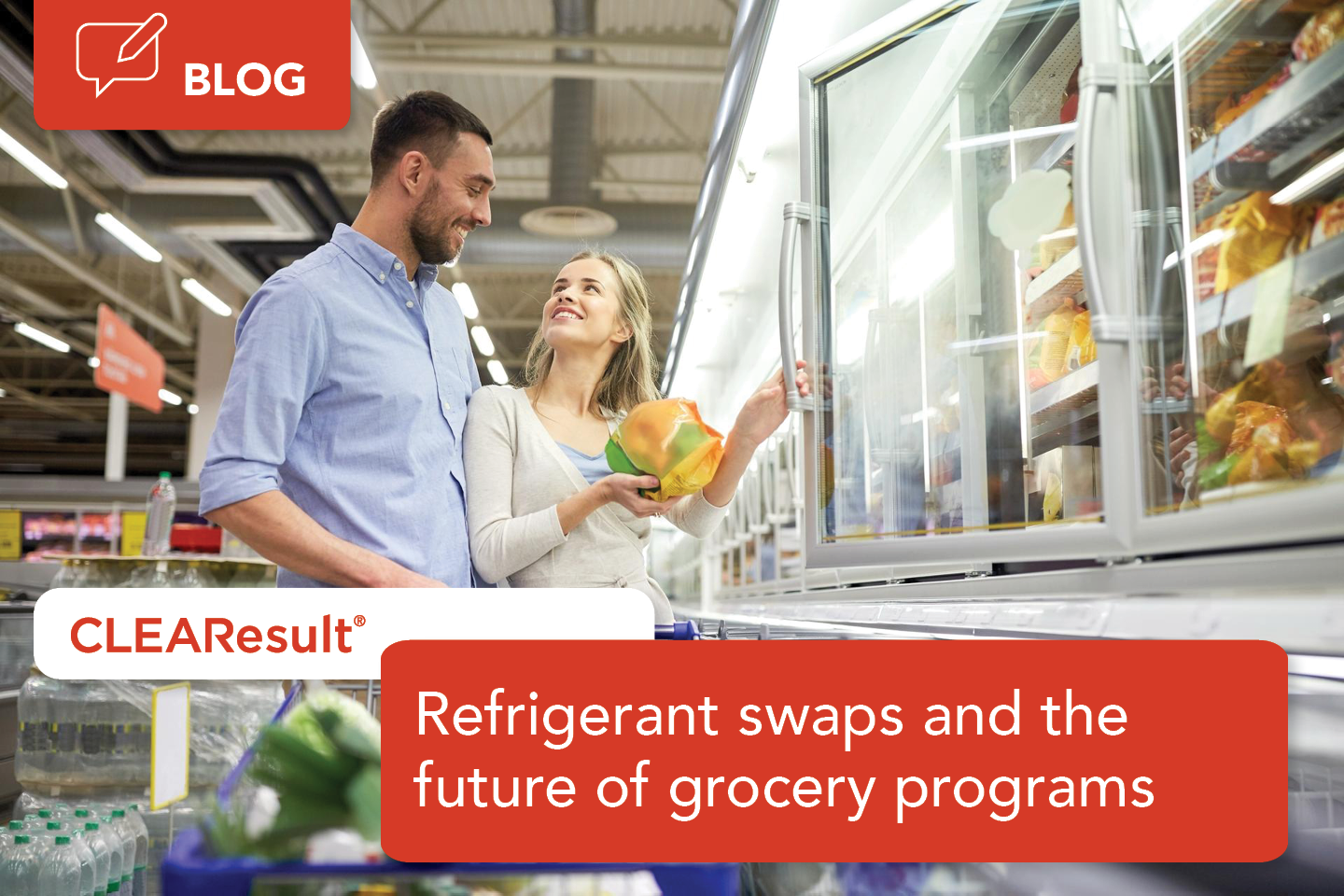Saving energy with refrigerant swaps and the future of grocery programs

Grocery stores have long been key players in energy efficiency and demand response programs due to their high energy use and narrow profit margins. These factors make grocers eager to cut energy costs, which presents utilities with significant opportunities for energy savings and participation in energy efficiency or energy transition programs. As regulations change, the focus for many grocers may shift to the refrigerants used in refrigeration systems. While refrigerants haven't been a traditional target for energy efficiency efforts, new pilot programs suggest there is potential for utility partnerships to discover new savings here, redefining the future of energy programs.
The transition from hydrofluorocarbon refrigerants
In 2020, the American Innovation and Manufacturing Act began a phasedown, transitioning away from hydrofluorocarbon (HFC) refrigerants. Yet HFCs are still the main refrigerants used today and have a very high global-warming potential (GWP), making them a strong target for climate policy. This year marks the second step of the phasedown, whereby the total GWP of refrigerants produced in the U.S. needs to be 40% lower than the baseline from 2013.
The market is already seeing the results of this. With manufacturers focusing on producing more low-GWP refrigerants, prices have significantly increased for commonly used high-GWP refrigerants like R-404A and R-134a. The lack of availability and price increases should compel grocers to look for low-GWP alternatives sooner rather than later. One of the first places they may turn is utility programs offering energy efficiency incentives that will offset some of the costs of this transition. However, there are challenges for utilities looking to integrate new refrigerants into their existing programs.
Identifying energy savings in refrigeration
Switching from a high-GWP to a low-GWP refrigerant doesn't always lead to immediate energy savings, as results can vary based on location and equipment type. Measuring and quantifying energy savings also requires metering equipment to track usage before and after the swap, which can be challenging and costly.
CLEAResult clients have addressed this challenge by launching pilots to test and identify energy savings from refrigerant swaps. In Michigan, in collaboration with Consumers Energy and another Michigan utility, we worked with 56 restaurants and 24 grocery stores to do just that. Over the last three years, we conducted pre- and post-metering at these facilities and established savings estimates for both electric (kWh) and decarbonization (CO2 avoided) savings.
Thanks to the data and positive findings of these pilots, we are targeting the addition of refrigerant swaps as a new prescriptive measure in the Michigan Energy Measures Database. While this addition is currently for specific-use cases (namely, medium-temperature walk-in refrigeration), it marks progress for refrigeration measures and identifies a new opportunity for this customer segment in Michigan to save energy.
The future of grocery programs
The effort to identify energy savings from refrigerants is ongoing in the Northeast. For the past 12 years, CLEAResult has administered National Grid’s EnergySmart Grocer program, which offers a comprehensive suite of measures to the grocery sector. These measures range from simple additions like night or strip curtains for refrigeration cases to more advanced measures like adding doors to refrigeration cases. This program takes a concierge approach, making it easy for grocers to identify energy-saving measures and minimizing the application process for quicker incentive payouts.
The success of this program highlights the strong relationship National Grid has built with the grocery sector and the effectiveness of its approach. Over the past 12 years, the program has completed over 3,000 projects, saving over 183 million kilowatt-hours and 1.3 million therms.
Earlier this year, National Grid selected CLEAResult to continue administering this program for the next three years. We look forward to introducing new measures and providing holistic support to grocers and foodservice customers. To supplement the existing measures, we recently completed a proof-of-concept pilot to quantify energy savings from repairing leaky refrigeration lines. Proper refrigeration management and other refrigerant transition activities are critical to the future of this program and others like it. This allows us to advise this market segment effectively, helping save energy and reduce greenhouse gas emissions.
Exciting opportunities
The future of grocer-specific programs is bright. While more work is needed to identify and solidify energy savings, refrigeration offers significant opportunities for both utilities and this key market segment. Thanks to partners like National Grid and Consumers Energy, we are helping these essential businesses address their most pressing needs and achieve meaningful decarbonization and energy savings.
Kevin Relyea is a Senior Practice Consultant for CLEAResult's Energy Efficiency Practice with a focus on commercial and industrial program designs. Kevin has a Master's degree in Information Management and over 16 years of experience on energy efficiency programs and innovations in particular focus on grocery and new construction segments that have delivered results across the U.S. Kevin is a keen follower of federal and state regulations that relate to low-GWP refrigerants and always looking for opportunities to bridge the gap between utility and decarbonization funding to help customers find their future-proof solution.